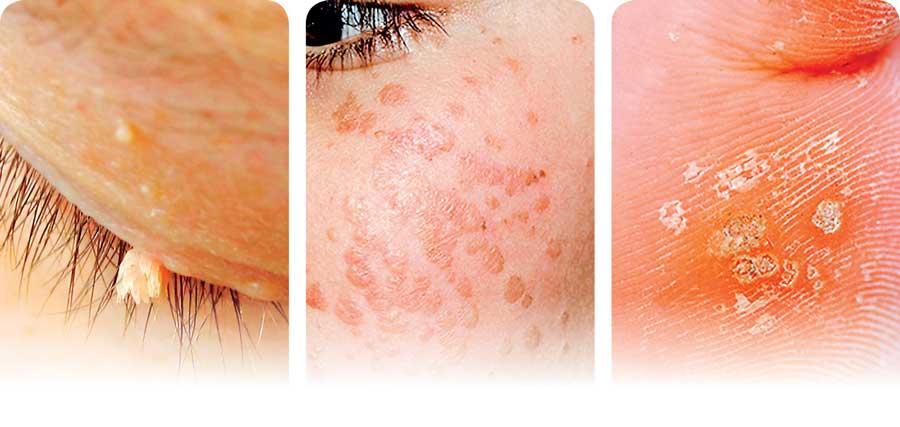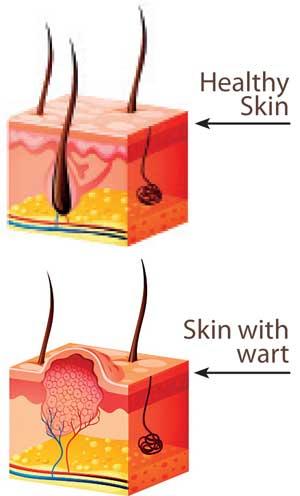27 Dec 2019 - {{hitsCtrl.values.hits}}

 Waking up in the morning to have an ugly wart greet you from the mirror could be frustrating. Your frustration grows as no amount of make up, facial cream or other beauty products can make them go away. Understanding this clearly, Daily Mirror spoke to Consultant Dermatologist Dr. Nayani Madarasingha with hopes of creating awareness on warts and treatments available for warts.
Waking up in the morning to have an ugly wart greet you from the mirror could be frustrating. Your frustration grows as no amount of make up, facial cream or other beauty products can make them go away. Understanding this clearly, Daily Mirror spoke to Consultant Dermatologist Dr. Nayani Madarasingha with hopes of creating awareness on warts and treatments available for warts.
What are warts?
Warts are small growths with a rough texture that can appear anywhere on the body. It can look like a solid lump with uneven surface or a small cauliflower. Dr. Madarasinghe said warts were caused by viruses in the Human Papilloma Virus (HPV) family. The virus infects the superficial layer of the epidermis and proliferate causing growths to appear on the skin. Usually warts are painless.
Warts are mostly seen among children and are uncommon among adults. This is probably because the immune system becomes better able to prevent their development over time. In addition transplant and other patients using immunity suppressive drugs are also more prone to warts due to their weakened immunity.
Types of warts 
According to Dr. Madarasinghe, there are different types of warts and their appearance depends on its location on the body and the thickness of the skin.
Common warts
Appearance: Small, grainy skin growths often appear in Skin-color. Rough and uneven to touch.
Location: On your knuckles, fingers or hands, especially around finger-nails and toe-nails
Planter warts
Appearance: Similar in appearance to callus. Flattened rough surface. Usually could be painful.
Location: Soles of feet, heels and toes
Plane warts
Appearance: Round, flat, and smooth. They can be yellowish, brownish, or skin colored
Location: Most common on the face. Found in hands, and shins.

Filiform warts
Appearance: Long and thin in shape. Attached to skin with a thin peduncle.
Location: More common on the face on eyelids and neck areas
Mucosal warts
Appearance: Small, soft, pink or white, slightly elevated areas.
Location: Oral cavity (Mouth)
Genital warts
This is a special type of warts which is transmitted through oral, anal or vaginal intercourse or other sexual acts.
Appearance: Mostly very small and skin colored or slightly darker. The top of the growths may resemble a cauliflower and may feel smooth or slightly bumpy to the touch.
Location: Genital organs including vagina, vaginal tract and cervix in females and penis , scrotum and general groin area in males. Could be found in anal and oral passages.
Methods of Transmission
Direct Skin to Skin contact
Dr. Madarasinghe emphasised that wart-causing virus can be passed on by direct skin to skin contact with the affected area of a patient.
The virus can spread to other parts of the body through scratching or biting a wart, sucking fingers and biting fingernails when there are warts around the nails and shaving the face or legs. Having wet or damaged skin, and coming into contact with rough surfaces increase the risk of infection.
Sometimes the virus could be transmitted through contact with towels or shoes.
Sexual contact
In relation to genital and anal warts, Dr. Madarasinghe noted that these warts could be transmitted from one person to another through sexual contact. Genital warts are more contagious that other types of warts.
Child birth
Dr. Madarasinghe noted that genital warts could be transmitted from mother to child during child birth
Treatment
According to Dr. Madarasingha , most warts clear up without treatment. It can take from a few weeks to several years, depending on the location and number of warts. According to her, the body gradually develops immunity against the virus and treatment is not necessary.
However, if they do not disappear, or if a wart causes concern , medical help is available.
Topical medication
Dr. Madarasinghe states that in most cases warts could be treated with skin applications including medically prescribed creams and ointments. These applications may cause warts to disappear gradually.
However, she said in cases where such treatment is ineffective, there were other types of treatments available for warts.
Cryotherapy
Cryotherapy is a type of treatment where freezing liquid, often nitrogen, is sprayed onto the wart, destroying the cells. A blister may develop, which eventually scabs and falls off a week or so later. Dr. Madarasinghe said this treatment could be a bit painful but was effective. It must be performed by a medical professional.
Electrocautery
Electrocautery is a way of removing a wart using heat from electricity. The electricity is used to heat the needle which is put on the wart.Usually the wart will go away after one electrocautery treatment. However, in most cases electrocautery usually leaves behind a wound which may take time to heal.
Laser treatment
According to Dr. Madarasinghe, laser treatment was another form of treatment available for warts. Laser surgery uses an intense beam of light, or laser, to burn and destroy the wart tissue. It should be performed by medical experts.
How to prevent
Dr. Madarasinghe believes that by avoiding skin contact with warts , its further spreading can be prevented.
Therefore one can protect oneself from by following these habbits.
In addition according to Dr. Madarasinghe, there are vaccines available to prevent warts.
Warts are a common dermatological issue in the society and they can cause embarrassment in your day to day lives. Therefore, one must take necessary precautions to protect from warts and follow proper treatment methods to be rid of warts.
21 Dec 2024 5 hours ago
21 Dec 2024 21 Dec 2024
21 Dec 2024 21 Dec 2024
21 Dec 2024 21 Dec 2024
21 Dec 2024 21 Dec 2024